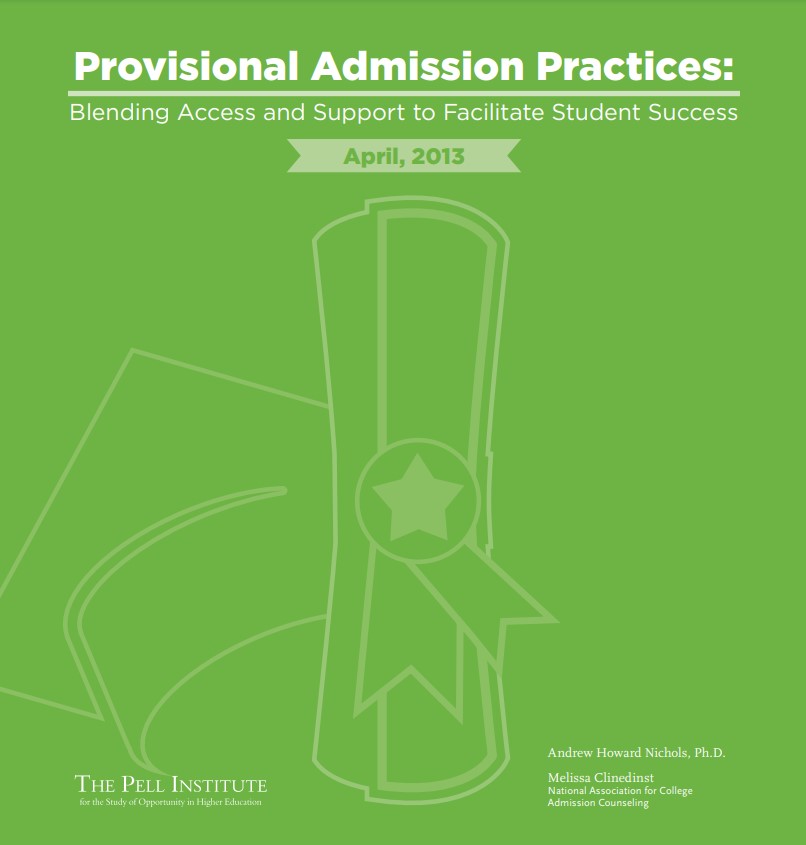Pell Institute report
Provisional Admission Practices – Blending Access and Support to Facilitate Student Success
This report examines provisional admission as an initiative that can expand four-year college access and success for students from economically disadvantaged backgrounds. Provisional admission policies and programs enable students to enroll at an institution under specific conditions. Students are often required to meet certain academic performance requirements, such as credit hour or GPA thresholds, and participate in academic support services. In this report, a mixed methods approach is used to provide a solid foundational understanding of provisional admission practices.
Findings from our survey suggest that provisional admission may be an overlooked and underutilized initiative at many four-year colleges and universities, particularly public institutions. Fewer than three out of five survey respondents (57%) reported having a provisional admission program. Additionally, these programs were found to help academically under-prepared students persist to the second year at equal rates to their peers with stronger academic profiles upon enrollment. Despite being considered academically under-prepared upon enrollment, more than seven out of ten students in these programs complete the first year.
The qualitative analysis from the data collected on the institutional site visits revealed that provisional admission programs helped:
- Promote post-secondary access to four-year institutions
- Strengthen students’ academic skills
- Develop students’ study and time management skills
- Build students’ confidence
- Develop relationships between students and their peers and institutional staff and faculty
Additionally, we discovered that three distinct provisional admission models were being used by the colleges and universities we visited. One model involved the use of a cohort-based curricular instruction model that supported students during the first year. Other schools either used a summer bridge experience model or a supplemental tutoring-based model. We found that the provisional admission programs were all quite distinct and tailored to meet both the goals and needs of students and the institution. Although we recommend the use of provisional admission programs, we hesitate to suggest a specific model. Programs should be designed to meet institutional needs and resources. Thus, we offer the following eight elements that provisional admission programs should include and support:
- Academic support
- Clearly outlined policies and requirements
- Faculty involvement
- Early contact with students
- Engagement within the larger student community
- Student performance monitoring
- Extended contact with students
- Program evaluation
More Research
Support Us
If you are a student support services professional, thank you. You are an unsung hero for all the good that you do, and surely you know by now that COE has your back.
Partner
Through strategic collaborations, we work to strengthen quality, opportunity and access to education for all American students — the next generation of global leaders.
Join Us
Join more than 1,000 colleges and community agencies committed to postsecondary opportunity for low-income, first-generation students, students with disabilities in all 50 states, Washington, D.C., the Pacific Islands, and Puerto Rico!
